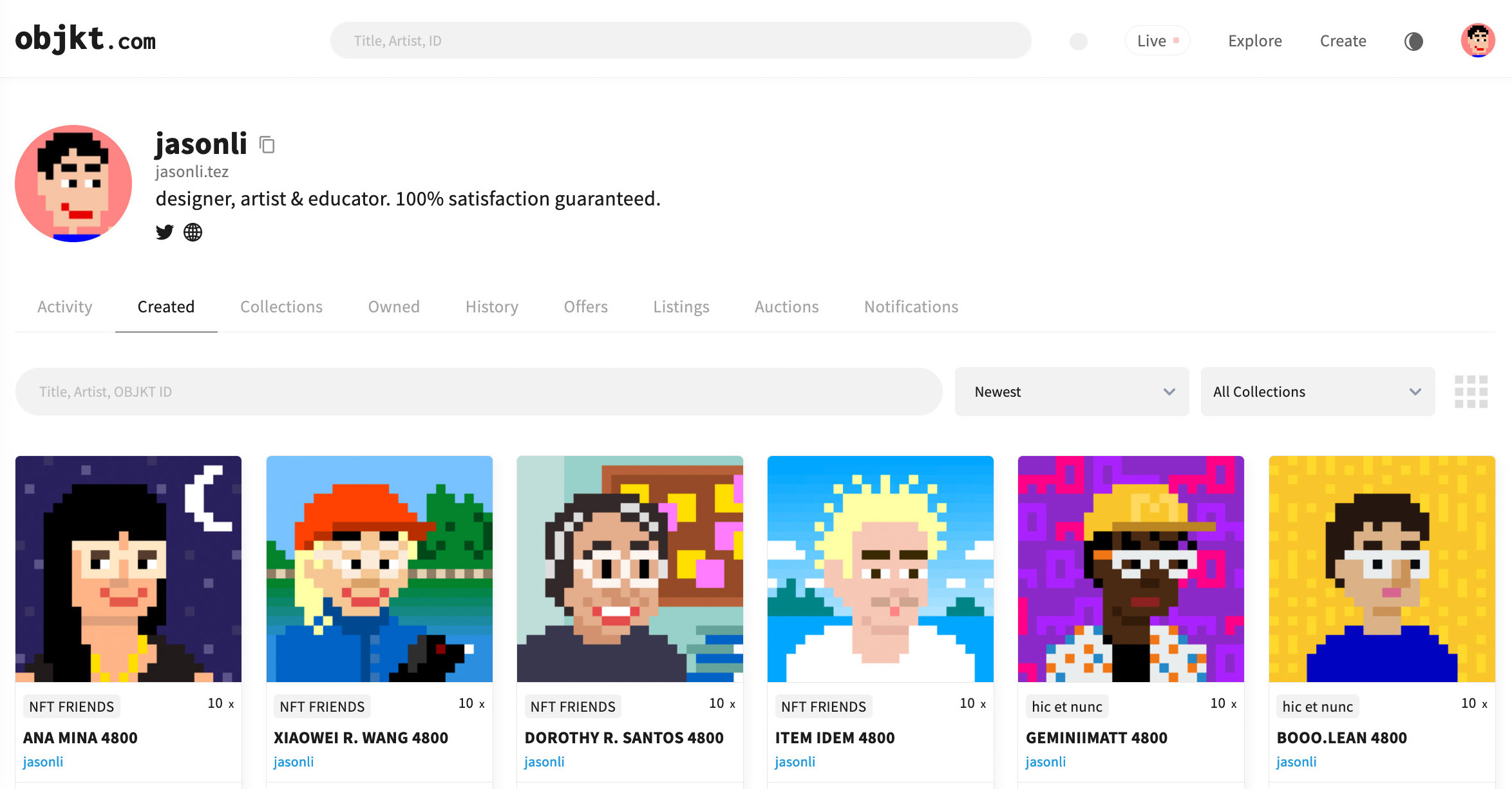It’s easy to be an NFT naysayer in 2022. The arguments against it are many — its blockchain transactions are killing the planet, you’re only buying a contract not a thing, it’s easy to pirate, the apes are ugly, it’s a bunch of crypto bros… and so on. But yet here we are, still entranced by the whole phenomenon, still trying to decide whether or not to participate because there’s a lot of energy and money going into the space right now.
As an artist, I initially approached NFTs gingerly, with a heavy dose of skepticism. But there are several things I subsequently learned that changed my thinking. To begin with, as this Hyperallergic podcast series points out: 1) some of the NFT art buyers were people who had gotten rich from cryptocurrency speculation (and you can’t really hate on wealth transfer from cryptocurrency investors to artists), and 2) NFTs are just the latest method of selling and collecting digital art (there’s still no clear, universally agreed-upon way to collect it). So in the broader context of the art world, NFTs do play a role in luring in new collectors and help digital artists sell their work.
Then, through artists item idem and Christopher Adams, I discovered a non-environmentally destructive NFT platform started in Brazil, hic et nunc, where each transaction “consumes as much energy as sending a Tweet.” This changed my mindset as an artist: I felt freer to play with NFTs and to experiment with them since each of my actions (and transactions) was no longer weighed down by the side effect of severely accelerating climate change. So if the whole NFTs system folds in a few months, I will lose time and money, but I won’t have accidentally harmed the planet needlessly along the way.
As an aside — if there are non-environmentally destructive NFT platforms, why doesn’t everyone use them? I’m not sure. I suspect it’s a mixture of how mature the underlying technology is and how many people are already using it. Whatever the reasons, the snail’s pace of adoption amongst the buyers, sellers, artists and platforms has been sobering to say the least. Most NFT transactions still use Ethereum, a blockchain technology where a single transaction leaves the “equivalent… carbon footprint of 255,323 VISA transactions or 19,200 hours of watching Youtube” (statistic retrieved January 13, 2022).
So I’ve begun my forays into the NFT space, albeit only in the environmentally-friendly or “clean” corners. I’ve only minted/created a handful of works so far, and haven’t made much in sales. But I’ve dipped my toes into that world, and am developing an understanding of its contours. It’ll be like any other part of my art practice — I’ll devote myself to it more if audiences respond, if I enjoy the process, and if it allows me to push the envelope in some way. But for now, I can say that I did the research, found a morally acceptable spot for myself, and am trying it out. If you’re an artist as well, I highly recommend this approach, if only to feel less anxious about missing out and less swayed by both the fanatical cheerleaders and the self-righteous naysayers.
If you’re interested in environmentally-friendly NFTs, either as an artist, collector or casual patron of the arts:
- Check out some #cleanNFTs marketplaces: OBJKT, Hic et Nunc, Kalamint. These platforms all use the Tezos blockchain, which is the only one I’ve experimented with so far. Luckily, the people behind Tezos seem committed to their energy efficiency, and Rarible just began supporting it last December.
- Here’s me on OBJKT and on Hic et Nunc — trying out different platforms is part of the fun in this early stage, so don’t feel obligated to find “the one” right now.
- Look out for other environmentally-friendly NFT platforms based on proof-of-work blockchains like Solana, Cardano and Flow. I’m not linking to them here because I don’t have any experience with them.
- Proceed with caution — the technology is still very much in flux, and as this project reminds us, there are a lot of scams going on in this space right now.
- Listen to the Hyperallergic podcast series on NFTs that I cited above.
P.S. I still think the apes are ugly.
Many thanks to the good folks at Cryptoharlem for their cleanNFT tutorials and for fielding my questions.
